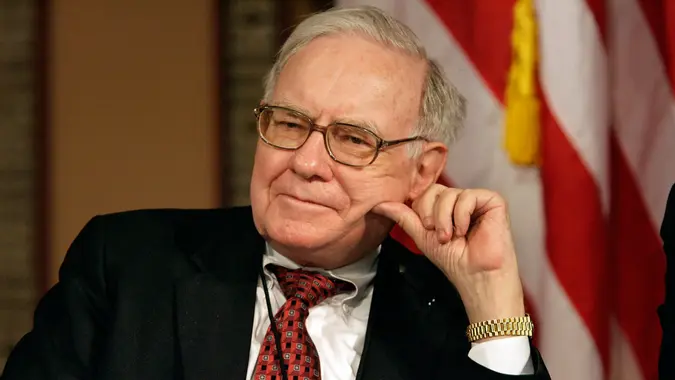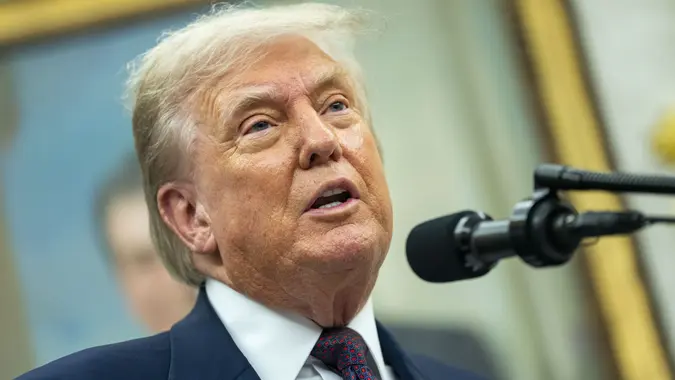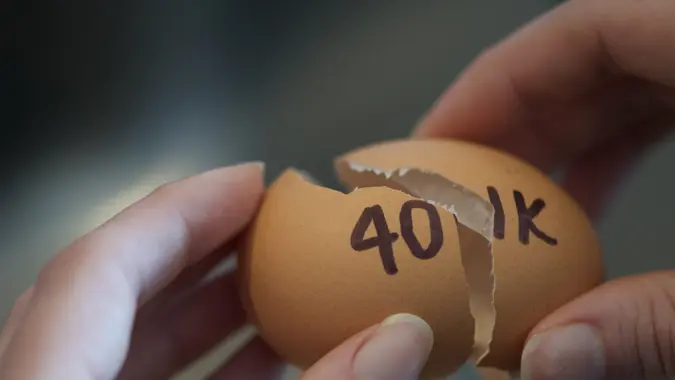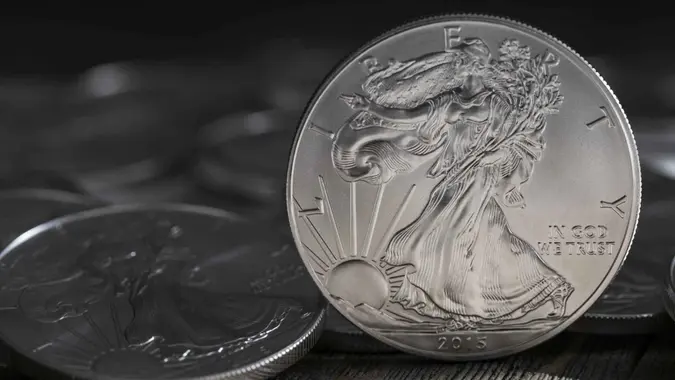Trump’s Tariffs: 4 Newest Changes and How They’re Impacting Your Money
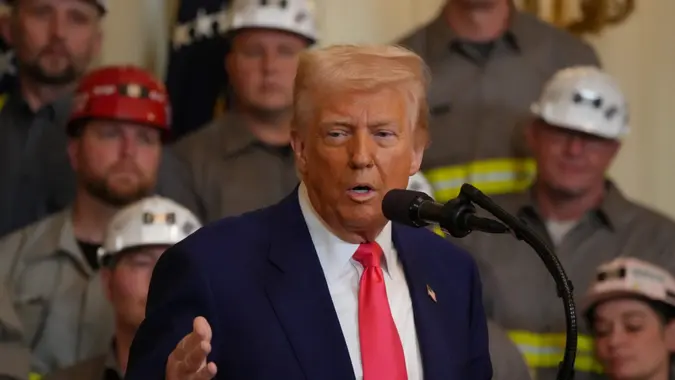
Commitment to Our Readers
GOBankingRates' editorial team is committed to bringing you unbiased reviews and information. We use data-driven methodologies to evaluate financial products and services - our reviews and ratings are not influenced by advertisers. You can read more about our editorial guidelines and our products and services review methodology.

20 Years
Helping You Live Richer

Reviewed
by Experts

Trusted by
Millions of Readers
Nobody who’d been following President Donald Trump’s political journey was shocked when, in his inaugural address on Jan. 20, he promised to “tariff and tax foreign countries to enrich our citizens.” He’d made such promises already, while campaigning for a second term. For example, in 2024, the then-candidate promised to impose tariffs of 10% to 20% on U.S. trading partners and 60% on China.
The Trump administration moved fast to embark on its tariffs promise. On Feb. 1, Trump signed an executive order to impose tariffs on imports from Mexico, Canada and China, effective Feb 4. On Feb. 10, Trump announced plans to increase steel and aluminum tariffs, beginning March 12.
The list of Trump’s recent tariff announcements and activity goes on. As of April 9, 2025, PBS’ Trump tariff activity timeline tracked 20 events between Jan. 20 and April 4 — all pretty major. It’s a lot to keep up with and it’s not much of an exaggeration to say that once you’re caught up to speed, new news on tariffs has likely erupted. It’s all just been way too chaotic for the stock market to handle, which is impacting many American’s finances.
Let’s consider four of the newest changes (since April 1) in this wild world of tariffs — and how they’re impacting your money.
The Stock Market Tanked
It seems a little premature to declare April 2, 2025, the day of the “2025 stock market crash” (because what if we have an even bigger crash later this year?) — but there it is, emblazoned on Wikipedia. On this day, global stock markets began to fall as a result of these new tariffs and trade wars. And the fall steepened from there.
On April 4, the going went from tough to brutal. The Dow plummeted by 2,231 points, or 5.5%. The broader S&P 500 was down 5.97% and the Nasdaq Composite was 5.82% lower. By the night of April 6, the S&P 500 had lost 15% of its value since Inauguration Day. To say investors (including everyday folks with 401(k) plans) panicked is an understatement.
$10 Trillion Was Lost Globally (And US Tech Giants Bore the Brunt)
According to Bloomberg, just three days of 4% market declines in April wiped out roughly $10 trillion in global equity value. Though this was an international blow, the U.S. stock market was hit the hardest. All of the leading tech companies, known as the “Magnificent 7” (Apple, Google, Amazon, Tesla, Meta, Nvidia and Microsoft) hemorrhaged money. Collectively, they lost more than $1 trillion. This was a huge blow to investors in U.S. tech.
Trump Issued a 90-Day Pause on Some Reciprocal Tariffs — And the Stock Market Rejoiced
There was no doubt that the stock market crash in early April was a result of Wall Street’s anxiety over tariffs and trade wars, but just in case there is any question, here’s proof: On April 9, right after Trump announced, on Truth Social, a 90-day pause on some of the reciprocal tariffs that he’s planning to roll out, the stock market surged.
The S&P 500 promptly went up 9.1%, the Dow Jones Industrial Average went up 2,861 points, or 7.4%, and the teach-heavy Nasdaq Composite went up 11.7%. The markets hadn’t enjoyed such big gains in years. Finally, things are looking to be turning around. But how can the positive momentum last if/when reciprocal tariffs are enacted?
Trump Raised China’s Tariffs to $125%, After China Imposed an 84% Tariff on the US
In the same Truth Social post where Trump announced he was pausing some reciprocal tariffs, he said that he was hiking the tariffs on China up to 125%.
“Based on the lack of respect that China has shown to the World’s Markets, I am hereby raising the Tariff charged to China by the United States of America to 125%, effective immediately,” Trump wrote.Trump’s raising of the tariff imposed on China happened after China said it would raise its tariff on U.S. goods to 84%. As a result of the steep tariff on China, we’ll all soon see items exported from the country go way up in price, including cellphones and electronics. So, if you need a new gadget that’s made in China, buy it now.
 Written by
Written by  Edited by
Edited by 



